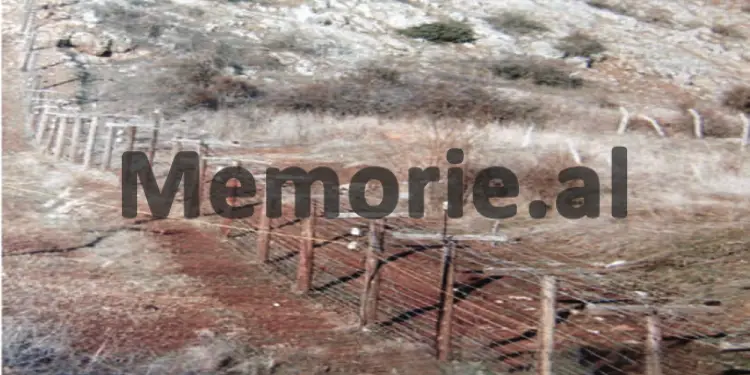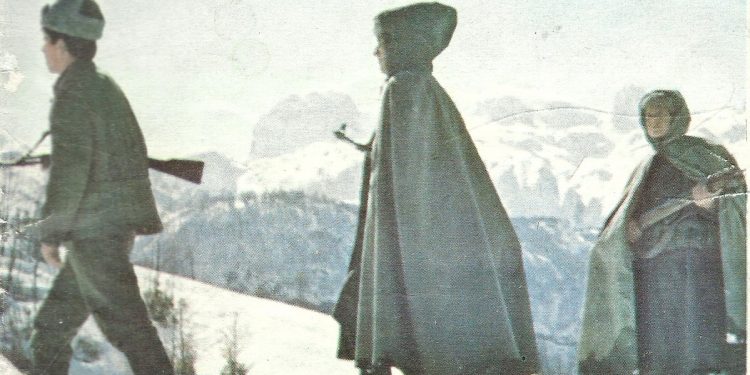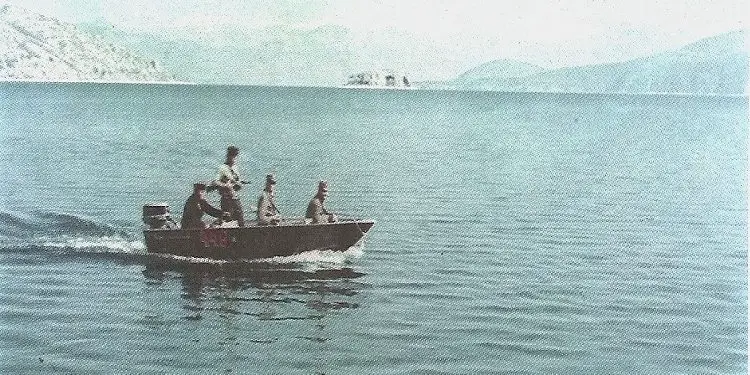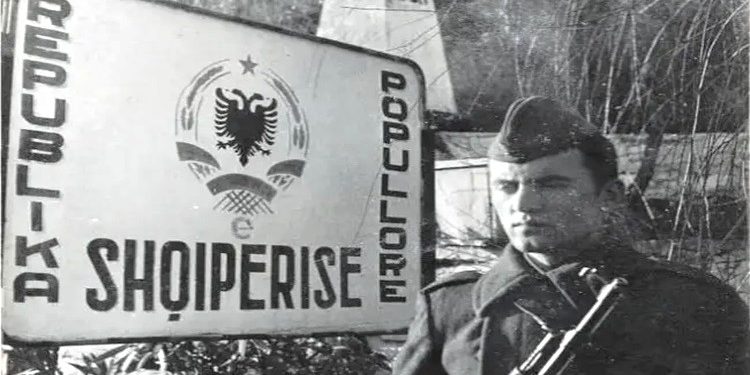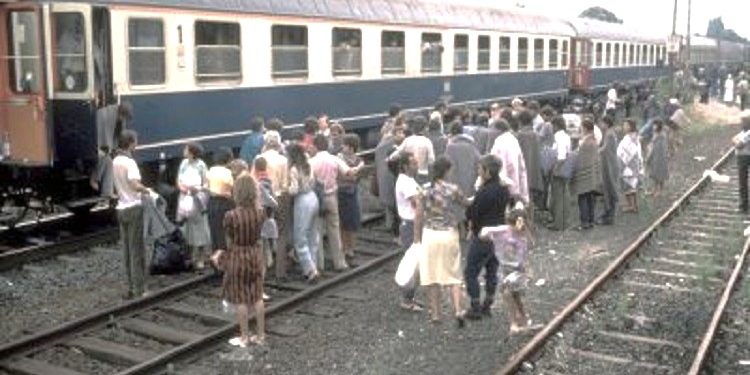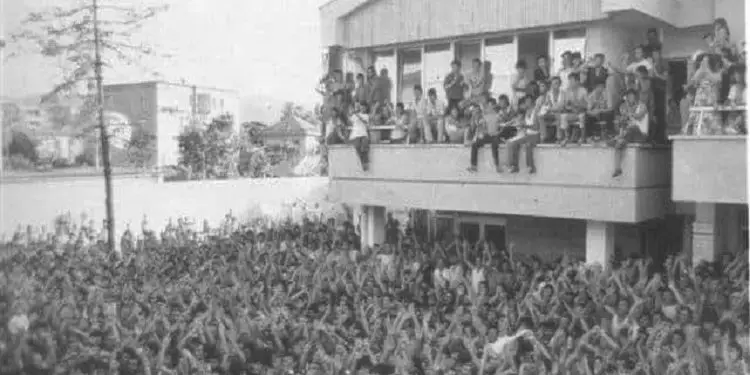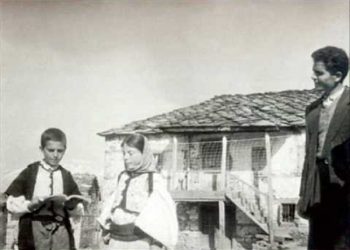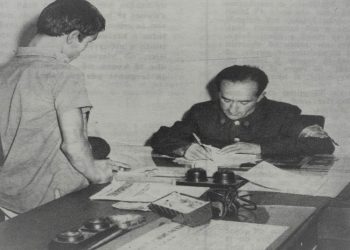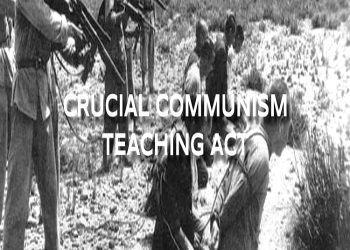Memorie.al / From January 1, 2024, citizens of Kosovo were finally able to travel in the Schengen area without passports, without going through bureaucratic procedures at foreign embassies. They are the last in the Balkans to gain this right and were preceded by Albanians who gained it in 2010. The analysis of illegal Albanian border crossings during the communist era and afterwards shows that visa liberalization was the result of a long-term struggle against one-sided systems of surveillance and profiling that still affect people’s lives.
The Border’s Transformation into a “Death Zone”
Illegal border crossings in Albania began after World War I, when the borders separating the country from the Kingdom of Serbs, Croats, and Slovenes – later Yugoslavia – and Greece, were fixed by the Great Powers. Those who remained on the Albanian side were separated from traditional mobility circles and were exposed to famine and violence. Illegal border crossings became a necessity.
After the end of World War II, the breakdown of Albanian-Yugoslav relations in 1948 and the civil war in Greece turned the border areas into one of the most dangerous places in the Balkans. The borders and border lands were strictly controlled by the Albanian army, initially as a means to prevent attacks from outside. From 1945 onwards (until 1991), they primarily served to prevent the escape of Albanians.
The communist government established the Border Forces in 1945. An area known as the border strip (brezi kufitar) was created along the border to prevent the free circulation of non-local residents. Soldiers moved on foot, motorcycles, and by boat, depending on the terrain. Their work was facilitated by tools and technologies such as the brezi i butë (soft belt) – a strip of soil that preserved footprints – and the “electric signaling barrier,” also known as the klon (clone/fence).
The klon was a fence placed hundreds of meters ahead of the border. It would emit a signal when someone touched or cut its wires. The space between the klon and the border was a death zone. Even if trespassers evaded the guards, they could eventually be caught by border dogs. The most effective means of stopping illegal emigration was the bullet from the “AK 56” automatic rifle, the standard weapon of border soldiers.
The authorities believed that border defense began within the country. The government passed harsh laws to deter people from attempting to escape. According to the Penal Code, any illegal crossing from inside to outside be an act of treason. The sentence ranged from ten years in prison to death. Trespassers were called “enemies,” “agents,” “traitors,” or “bandits.”
The local population was mobilized to assist the authorities. They were required to report suspicious persons and form “voluntary forces” to track those who attempted to cross the borders. The Ministry of Internal Affairs monitored individuals with “liberal” tendencies and “bad biographies,” who were thought likely to flee.
Border defense was fueled by the cult of the border, a foundational nationalist myth of the communist era. The borders were sanctified by the blood of soldiers killed in combat against foreign armies and political dissidents. Several monuments commemorating their sacrifice were built in the border regions, and the columns marking the state borders became a central element of the border mystique. They were called “piramida” (pyramids).
The border became a popular theme in art and culture. In November 1961, an art exhibition was inaugurated in Tirana to celebrate the heroism of the border guards, who were compared to national figures of the magnitude of Skanderbeg. Ironically, the author of some of the works, Zoi Shyti, illegally crossed the border himself a few years later.
“The Art of Illegal Border Crossing”
The strict measures taken to guard the borders did not prevent people from attempting to cross them. The “art of border surveillance” (Jorgo Qirici, The Guarding and Protection of the Albanian Border, 2017) was opposed by the art of border crossing. In September 1956, 56 people from the village of Gërmenj in Ersekë (Kolonjë district) crossed into Greece and took with them a flock of 900 livestock and 40 animals loaded with materials.
Attempts to flee the country increased in the late 1960s, especially among the younger generations. People studied the terrain, sought the support of the local population, and attempted to cross the klon by various means, such as ladders. Some people used cars to pass through checkpoints at high speed; others hid inside trucks and boats.
According to Jorgo Qirici, between 1966 and 1975, 526 people attempted to cross the borders. Only 166 were captured. One of those who escaped was Demiri, with whom I spoke in Tirana. Born and raised in the capital, his family came from Steblevë, a village bordering North Macedonia.
When he finished high school, Demiri was denied the right to attend university to study architecture because his family was known to the communist regime as former supporters of King Zog, and the party prioritized higher education for students from working-class families with “clean” biographies.
Instead, the state sent Demiri to work at a power plant in Vau i Dejës. His disappointment convinced him to go to Yugoslavia and find his aunt, who lived in Skopje. “All day and all night I thought about leaving,” he told me. A relative’s wedding gave Demiri the opportunity to go to Steblevë and get close to the border. Ideas and plans for escape often stemmed from conversations with friends. People talked about politics, anti-conformist music, movies, and other “subversive” topics.
The fear of being spied upon was great, but, according to Demiri, people would have gone crazy if they had kept everything inside. He confessed his intentions to a friend who gave Demiri the names of his relatives in the city of Dibër, just across the border. Demiri went to Steblevë at the end of September. On the 27th, he left the wedding and followed his cousin, who was grazing sheep near the border. Demiri was able to spot the soft belt.
It was a rainy day. The sheep were gathered as it was cool. Demiri waited for the right moment and crossed the border. After spending the night near the border, Demiri ate some apples and started walking toward Dibër, 25 kilometers away. He found the house of his friend’s relatives and told them he wanted to go to Skopje. They offered him shelter for the night. Demiri slept until the afternoon, unaware that those he trusted were actually “digging his grave.” The next day, they took him to the Yugoslav police.
Demiri explained that he was a political persecutee and had come to Yugoslavia to stay with his aunt and study. He was sent to a “re-education” camp in Idrizovë, near Skopje, where he stayed for four months and was not allowed to contact his aunt. One day, the police told him that his request to study had been accepted and that they would take him to Belgrade. This was a wicked lie. Instead, they sent him to the Qaf Thanë border post. “This was the end of my life,” Demiri told me bitterly.
The Albanian border guards brutally beat him. The torture continued in Tirana prison, where the sadistic investigator Isa Halilaj hit him with a metal stick. When he was brought to court, he was so weakened that even his mother could not recognize him. The court sentenced him to ten years in prison. He spent four years in a prison camp in southern Albania and six years in the infamous Spaç prison, where he worked in the mines.
But prison and death sentences did not stop Albanians from planning to escape. Archival documents show that many people convicted of border crossing attempted again when they had the chance. In the late 1980s, the regime began to crumble. The economy was in decline. A 1981 report states that most of the people who had attempted to escape were from the “poor” classes, indicating the structural failure of the socialist state.
Albanians Lose Patience as Communism Collapses in Europe
Petro was in his early twenties when he decided to escape. He could no longer stand living in a state that offered few opportunities for self-fulfillment and where party well-wishers would tell him how to cut his hair. Many people of his generation felt they were wasting their lives in Albania.
The pressure to leave was summarized by the expression: “Oh men, let us be free!” (Come on, men, let’s free ourselves!).
Petro went to the border regions in October 1988, when a friend invited him to a wedding in Zagrad, in the Dibër region. Drunk from the drums and plum raki, Petro observed the mountains that separated Albania from Yugoslavia. The border was very close; why not go to the other side? Petro asked someone from the village to take him to the border. The man agreed but asked him what he would do on the other side.
“I don’t know,” Petro told him. “Maybe the Serbs will arrest me. But I can’t stay here anymore. I just want to leave!” Petro returned to Zagrad in February 1989, determined to escape. He had brought a small pig with him as a gift for his friends in the village. But just one day before the escape, the terrifying sound of the automatic rifle filled the space between the mountains. Two people were killed and one was wounded. Controls were temporarily reinforced, and Petro had to return.
As communist Europe was coming to an end, so too was the patience of young Albanians, who were more willing to risk their lives at the borders. Petro attempted to escape several more times. In 1990, he heard that there was a breach in the border with Greece near Korçë. He went there but found a terrifying situation: “People were being killed every day. The border dogs were eating people.”
He wisely decided not to take the risk. The days of the communist regime were almost over, but the army was still using all its force to prevent people from crossing the borders. In March 1990, the commander of the border forces ordered the soldiers to continue using machine guns and bombs to stop people trying to cross the border.
The communist regime fell in December 1990, and illegal border crossing was no longer considered treason. This change encouraged more people to take their chances and leave. In January 1991, Petro received information. The border could be crossed near Gjirokastër. He went there with two friends, and the group continued to grow as they met other people on the way to the border. Two individuals offered to take them to the border, and Petro’s friend gave them his watch for this.
Thus began the “business” of illegal emigration in Albania. When they reached the village of Jorgucat, the group numbered around 100 people, including many women and children. Some went ahead to check if it was safe to continue the journey. The border was guarded, but the klon was damaged. This part of the border had two klon strips. Immediately after crossing the first one, bullets were fired over their heads. The group lay down on the ground. Two soldiers and an officer approached them.
The officer gritted his teeth and threatened to kill them, but then demanded money. The group had no money, so they gave him their rings and watches, and the officer let them cross. After 36 hours of walking, those who remained in the group entered Greek territory and reached the asphalt road. Petro was impressed by his first contact with a world that seemed more civilized than the one he had left behind.
The group was stopped by Greek soldiers. After the Albanian soldiers had taken their belongings, the Greeks took their identities. All their documents were confiscated. They asked them for their names. Those with Christian names were sent to the Amyntaio camp; those with Muslim names went to the Kozani camp. The Greek authorities treated the Christian Albanians well, but behaved very badly towards the Muslims.
Petro has good memories of the Greek people who helped him, but the violence of the Greek police against Albanians who had committed crimes was no different from the violence of the Albanian border guards against those who attempted to escape. Petro also criticizes the Greek government for not returning his passport and not giving him documents. For years, he was forced to cross the border illegally to visit his family in Albania and then return to Greece where he worked. In the early 1990s, illegal border crossing became routine for him and many other Albanians.
Borders Are Not Just About Territory
After December 1990, the experience of border crossing took on different meanings for Albanians. The rhetoric of the border between “socialism” and “capitalism” had just ended. But Albanians began to deal with more primitive and ubiquitous concepts of borders, for which there were no clear territorial boundaries. The border was almost everywhere they could be heard or seen.
It was in their clothes, in their “loud” appearance, in their accent, in their ethics and customs, in their tired and prematurely aged faces, in their poverty, in their language, in the shame of their failed state and politicians, in their innermost being as unwanted people. The communist dictatorship judged people by their biographies.
Capitalist states took a more radical approach: people were not judged simply by their deeds or those of their families, but by the characteristics of nations, races, and religious groups. The doors of the world finally opened for Albanians because they had knocked them down at the cost of their lives. But, as the past precedes the future, guards with dogs and guns will continue to follow them wherever they go. / Memorie.al




